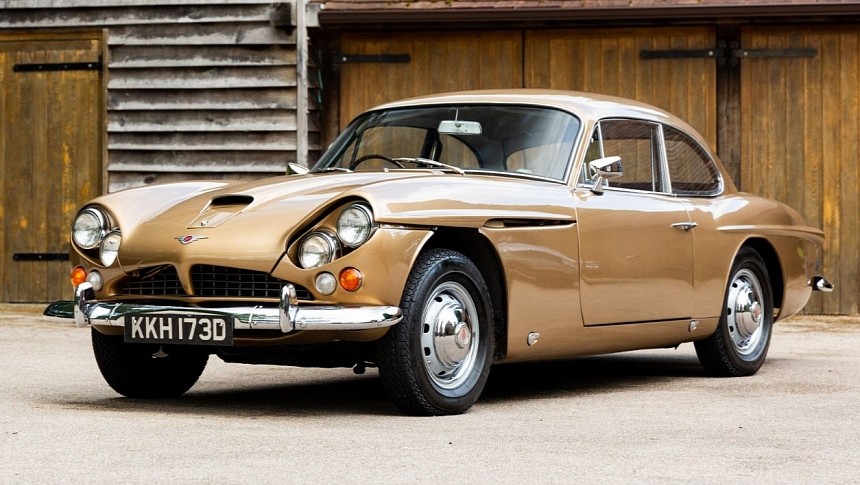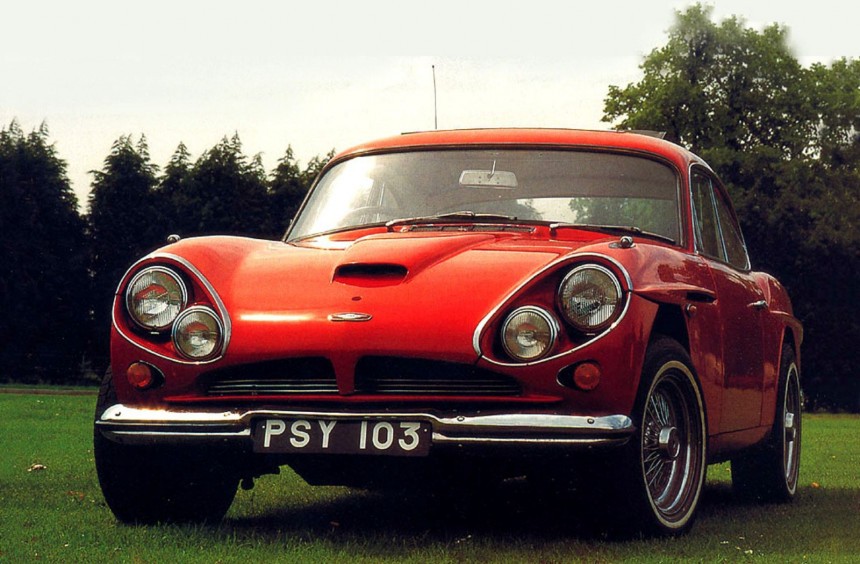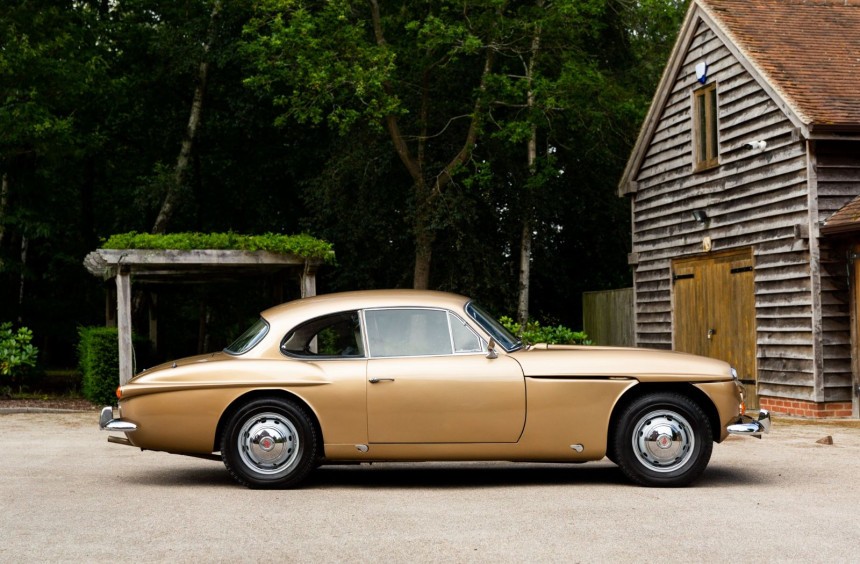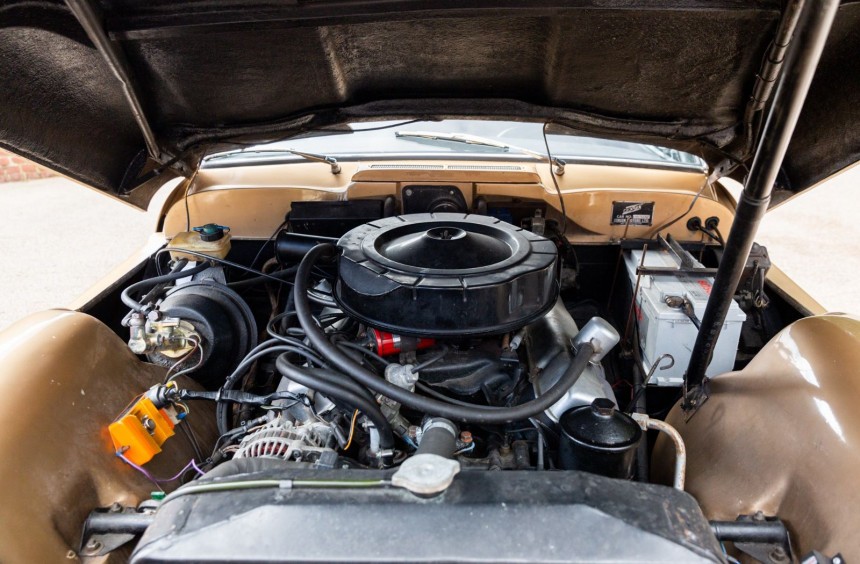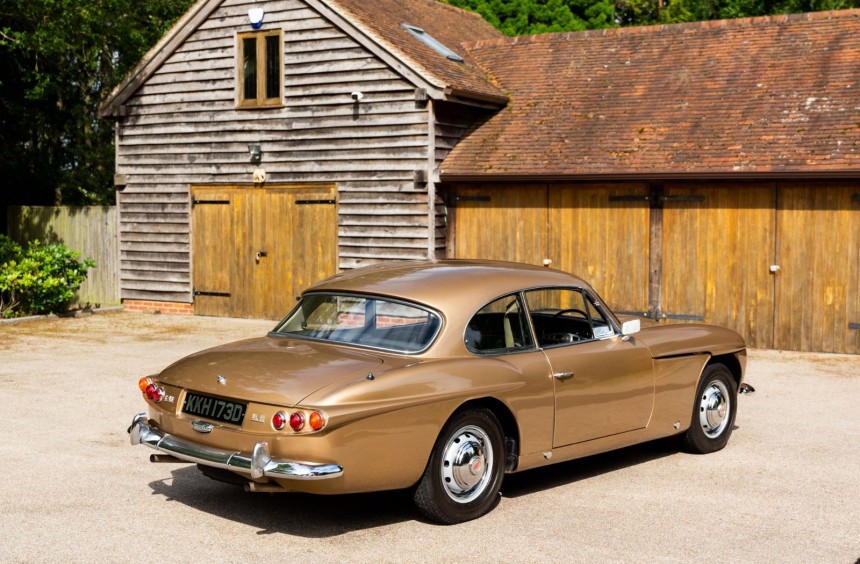The C-V8 doesn't ring any bells for today's enthusiasts. Still, by perfectly combining American V8 power and reliability with British design and engineering excellence, it remains one of the most exciting grand tourers of the 1960s.
Though it's not around these days, Jensen Motors was once one of Britain's most respected carmakers. Its origins can be traced back to brothers Alan and Richard Jensen, who took over a small company called W J Smith & Sons and transformed it into a reputable coachbuilder during the 1930s.
Under the name Jensen Motors, the West Bromwich-based company continued manufacturing bodies for commercial vehicles but also expanded to the automotive industry by producing custom cars - including a famous Ford-based one-off commissioned by Hollywood icon Clark Gable.
The Second World War almost led to the company's demise, but it managed to survive by building components for military vehicles. Then, after the war ended, it resumed commercial vehicle production, followed by a luxury sedan.
During the 1950s, Jensen started developing its own sports cars, and due to the nationwide steel shortage, it began experimenting with fiberglass bodies. This led to an interesting, lightweight sports car called 541 which became the company's flagship throughout that decade.
But, by the early 1960s, the 541 had become obsolete, especially compared to Jaguar's extremely popular E-Type. Therefore, Jensen's lead designer Eric Neale began developing a new model, and the result was one of the fastest, most exciting grand tourers of its era.
Unveiled in October 1962, the C-V8 retained its predecessor's lightweight construction and featured an updated bodywork. Except for the door panels, the structure was built entirely out of fiberglass, which was not only light but also corrosion-proof and easy to maintain.
Combining ample curves and sharp lines, the body's styling was generally praised, yet some people criticized its front end. Initially, Eric Neale designed the double-stacked headlights with glass covers - similar to those of the E-Type.
However, the covers were removed from the production version over concerns that they would affect the efficiency of the headlights. Since there wasn't enough time to redesign the moldings for the front end, the C-V8 went into production with those weird-looking, cover-less headlights.
While its looks were (and still are) controversial, the elegance and comfort offered by the C-V8s cabin was nearly flawless. With leather upholstery, plush carpeting, and surprisingly ample room for four adults in a 2+2 configuration, it was as comfortable and luxurious as what one would find inside the era's most exquisite grand tourers.
The C-V8's lightweight fiberglass body was mounted on a robust tubular chassis manufactured from 4-inch steel beams.
For a limited-series grand tourer produced by a small company, the C-V8 was remarkably well-engineered. It was the first British car to employ an alternator rather than a dynamo. Moreover, it featured a well-tuned suspension system, a responsive rack-and-pinion steering, and sturdy disc brakes on all four corners.
Jensen also built a prototype of the C-V8 that came with a novel anti-lock braking system and four-wheel drive. Though these technologies never made it into the production version, they were used in 1966 on the innovative Jensen FF - the first non-all-terrain car to feature a four-wheel-drive powertrain.
While its predecessor used a British-built Austin D-Series inline-six, the C-V8 received an American powertrain borrowed from Chrysler.
The grand tourer was initially equipped with a 361-ci (5.9-liter) Golden Comando V8 mated to a three-speed Torqueflite automatic. It was also a very reliable engine and transmission capable of delivering 295 hp of smooth power.
Then, the revised Mk II (1964) and Mk III (1965) models became even more powerful thanks to the bigger 383-ci (6.3-liter) version of the Golden Comando. The engine rated at 330 hp and sent a healthy 460 lb-ft (623 Nm) of torque to the rear wheels through the same automatic gearbox and a limited-slip differential.
A four-speed manual was also optionally available with both engines, but only a few cars left the West Bromwich factory in that configuration.
In terms of performance, 383-equipped cars could accelerate from 0 to 60 mph (97 kph) in 6.7 seconds, run the quarter mile in 14.6 seconds, and reach a top speed of 136 mph (219 kph). Those figures made it not just sensibly faster than its British rivals but one of the fastest sports cars available during the first half of the 1960s.
Though its exterior design left room for debate, the C-V8 was undeniably well-built. It had a reliable powertrain, offered a high level of luxury, and was blistering fast. All these characteristics made it better than British rivals like the Jaguar E-Type and a viable competitor for some of the world's finest grand tourers.
However, from 1962 to 1966, when production ended, Jensen only built 499 units. This low figure might lead you to think that people weren't all that interested in the C-V8, which couldn't be farther from the truth. In fact, Jensen struggled to keep up with demand throughout the production run, and the low figure resulted from the company's limited resources.
If it had been developed by one of Britain's biggest carmakers like Aston Martin or Jaguar, which had the means to build more units and advertise the model properly, the C-V8 would have been much more famous.
Even though it was one of the greatest grand tourers of its era, the C-V8 was eclipsed by similar models from established manufacturers.
Today, it has been forgotten by all but a few enthusiasts who have a soft spot for 1960s British GTs, despite still being capable of delivering an exciting driving experience. One of these enthusiasts is the one and only Jay Leno, who featured it in an episode of his show which you can watch below.
Not only does it remain one of the most grossly underrated grand tourers of all time, but it's also one of the most undervalued. According to collectingcars.com, a well-kept, low-mileage example currently demands around $50,000. The Mk III featured in this article was auctioned off last year, fetching so£41,000 (about $51,000).
Under the name Jensen Motors, the West Bromwich-based company continued manufacturing bodies for commercial vehicles but also expanded to the automotive industry by producing custom cars - including a famous Ford-based one-off commissioned by Hollywood icon Clark Gable.
The Second World War almost led to the company's demise, but it managed to survive by building components for military vehicles. Then, after the war ended, it resumed commercial vehicle production, followed by a luxury sedan.
During the 1950s, Jensen started developing its own sports cars, and due to the nationwide steel shortage, it began experimenting with fiberglass bodies. This led to an interesting, lightweight sports car called 541 which became the company's flagship throughout that decade.
But, by the early 1960s, the 541 had become obsolete, especially compared to Jaguar's extremely popular E-Type. Therefore, Jensen's lead designer Eric Neale began developing a new model, and the result was one of the fastest, most exciting grand tourers of its era.
A gorgeous fiberglass body with a controversial front end
Combining ample curves and sharp lines, the body's styling was generally praised, yet some people criticized its front end. Initially, Eric Neale designed the double-stacked headlights with glass covers - similar to those of the E-Type.
However, the covers were removed from the production version over concerns that they would affect the efficiency of the headlights. Since there wasn't enough time to redesign the moldings for the front end, the C-V8 went into production with those weird-looking, cover-less headlights.
While its looks were (and still are) controversial, the elegance and comfort offered by the C-V8s cabin was nearly flawless. With leather upholstery, plush carpeting, and surprisingly ample room for four adults in a 2+2 configuration, it was as comfortable and luxurious as what one would find inside the era's most exquisite grand tourers.
Remarkable engineering
For a limited-series grand tourer produced by a small company, the C-V8 was remarkably well-engineered. It was the first British car to employ an alternator rather than a dynamo. Moreover, it featured a well-tuned suspension system, a responsive rack-and-pinion steering, and sturdy disc brakes on all four corners.
Jensen also built a prototype of the C-V8 that came with a novel anti-lock braking system and four-wheel drive. Though these technologies never made it into the production version, they were used in 1966 on the innovative Jensen FF - the first non-all-terrain car to feature a four-wheel-drive powertrain.
Powered by American muscle
The grand tourer was initially equipped with a 361-ci (5.9-liter) Golden Comando V8 mated to a three-speed Torqueflite automatic. It was also a very reliable engine and transmission capable of delivering 295 hp of smooth power.
Then, the revised Mk II (1964) and Mk III (1965) models became even more powerful thanks to the bigger 383-ci (6.3-liter) version of the Golden Comando. The engine rated at 330 hp and sent a healthy 460 lb-ft (623 Nm) of torque to the rear wheels through the same automatic gearbox and a limited-slip differential.
A four-speed manual was also optionally available with both engines, but only a few cars left the West Bromwich factory in that configuration.
In terms of performance, 383-equipped cars could accelerate from 0 to 60 mph (97 kph) in 6.7 seconds, run the quarter mile in 14.6 seconds, and reach a top speed of 136 mph (219 kph). Those figures made it not just sensibly faster than its British rivals but one of the fastest sports cars available during the first half of the 1960s.
Grossly underrated
However, from 1962 to 1966, when production ended, Jensen only built 499 units. This low figure might lead you to think that people weren't all that interested in the C-V8, which couldn't be farther from the truth. In fact, Jensen struggled to keep up with demand throughout the production run, and the low figure resulted from the company's limited resources.
If it had been developed by one of Britain's biggest carmakers like Aston Martin or Jaguar, which had the means to build more units and advertise the model properly, the C-V8 would have been much more famous.
Even though it was one of the greatest grand tourers of its era, the C-V8 was eclipsed by similar models from established manufacturers.
Today, it has been forgotten by all but a few enthusiasts who have a soft spot for 1960s British GTs, despite still being capable of delivering an exciting driving experience. One of these enthusiasts is the one and only Jay Leno, who featured it in an episode of his show which you can watch below.
Not only does it remain one of the most grossly underrated grand tourers of all time, but it's also one of the most undervalued. According to collectingcars.com, a well-kept, low-mileage example currently demands around $50,000. The Mk III featured in this article was auctioned off last year, fetching so£41,000 (about $51,000).
